February 13, 2024
Winter Pruning: Autumn Sage & Mealy Blue Sage
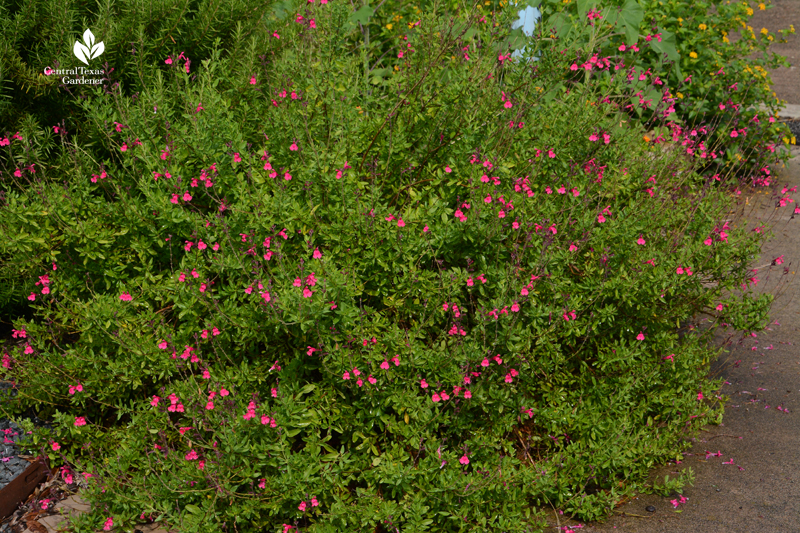
Autumn sage (Salvia greggii) announces that spring is here when bees, butterflies, and hummingbirds descend upon its miniature flowers to drink up.
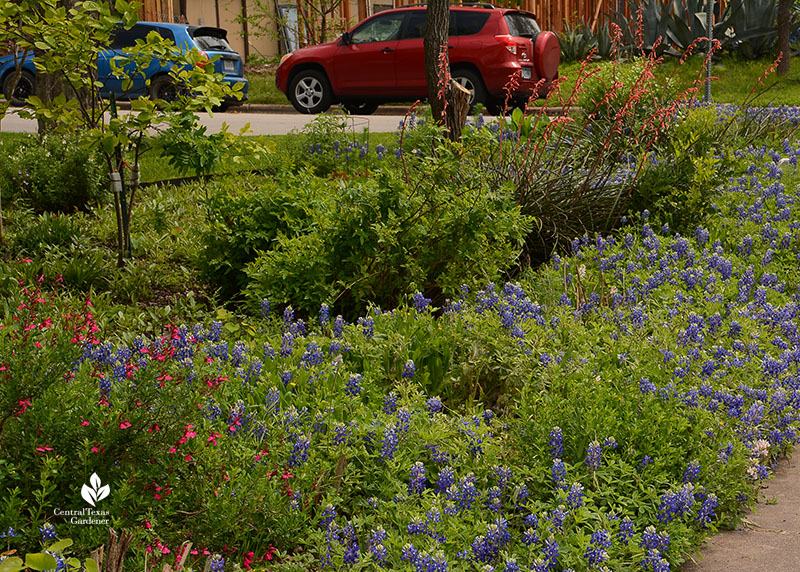
For some reason, this native woody perennial (also considered a sub shrub) is called “autumn sage,” though it can bloom as early as February. After a summer break, it resumes in fall, just in time for migrating hummingbirds and butterflies.
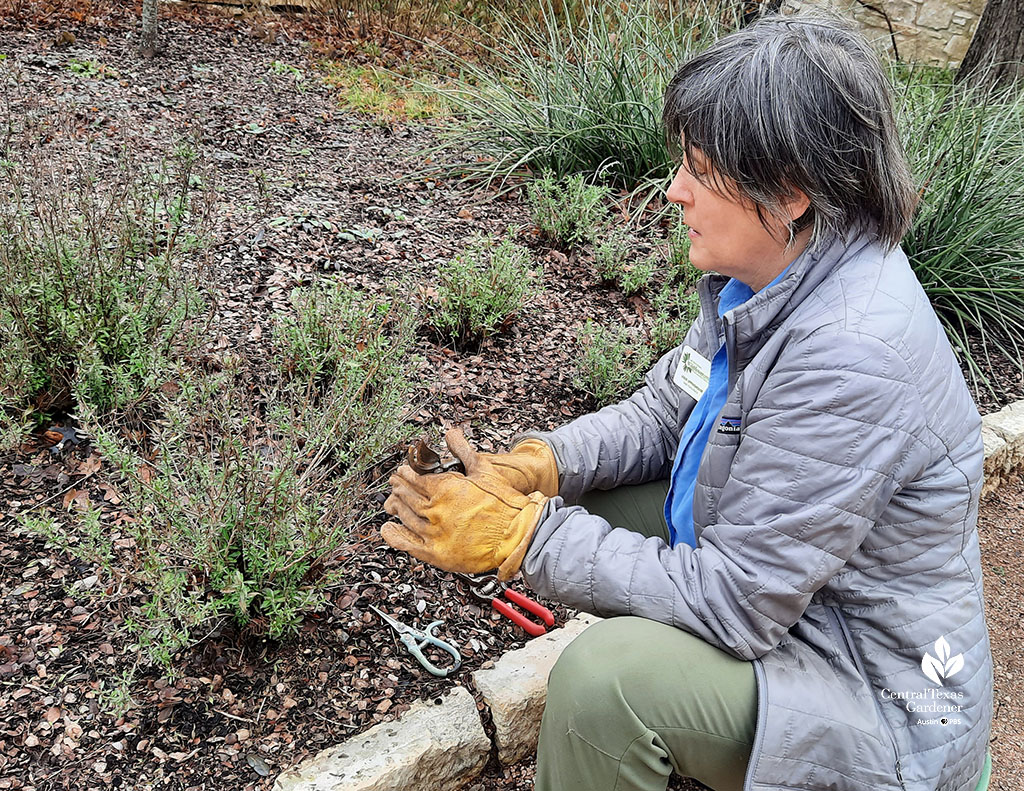
Early February’s a great time to clip and shape for looks—same height and lush form—and for long term health. So, we headed to the Wildflower Center where horticulturist Leslie Uppinghouse showed where to cut above new growth. “You’ll want to look for your oldest branches and make sure that they’re still viable, that they’re still showing a lot of fresh green growth.” If a branch doesn’t show new growth, remove it by cutting at the base. She pruned a few in advance to show the difference between before and after.
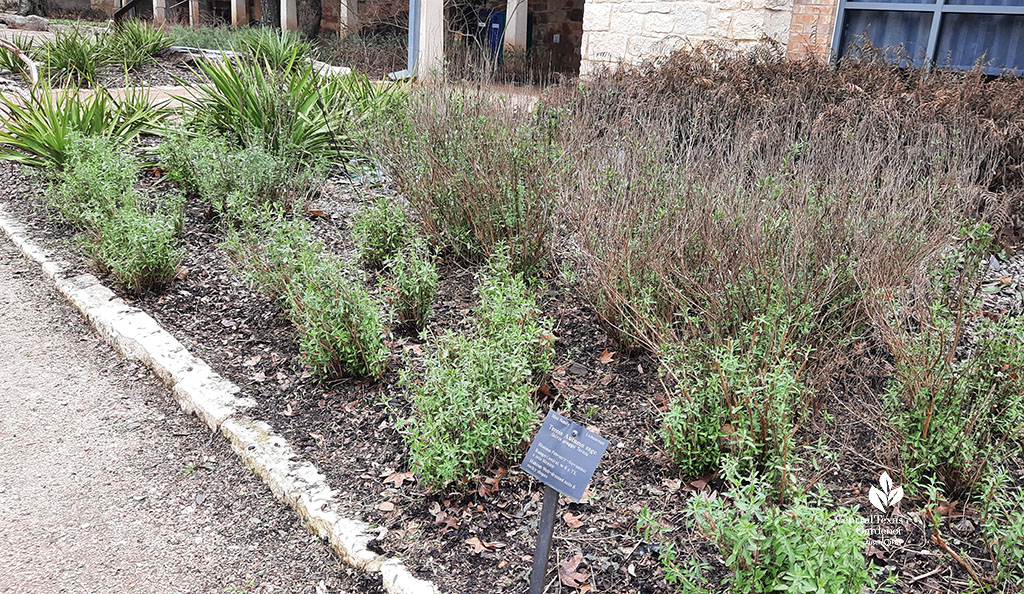
“But I wouldn’t recommend removing all of your old growth,” she added. “I treat autumn sage kind of like a rose, a very old tea rose. About every three years I take out my oldest stalks and I let some of those new ones sort of take their place. And so that’s sort of the general rule I make with all the sub shrubs or the woody shrubs. And that’s not a hard, fast rule. It’s just my preference.” Leslie also advised to pull piles of mulch or leaves away from the base to avoid rot. Check for rotting branches, too, and simply pluck them out.
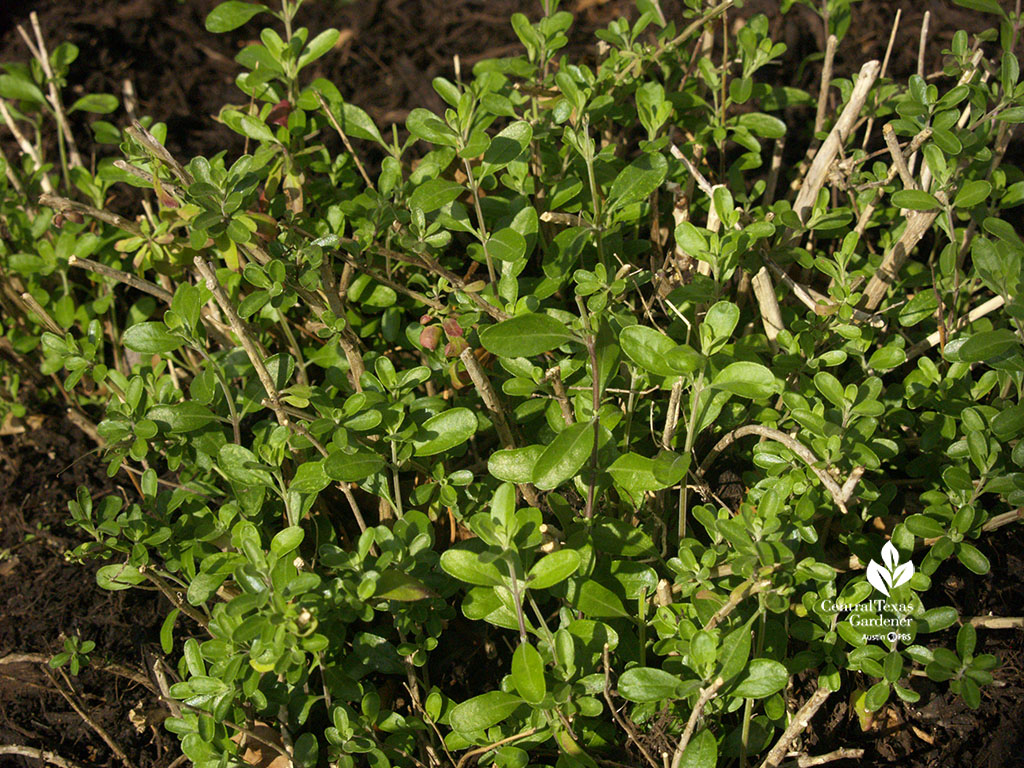
She likes to wait until after a freeze for late winter’s shaping. All salvias, she told us, produce new growth after pruning. So, after spring flowering, “I’ll tip off those blooms; not even a third of the plant. I’ll tip back to some nice green growth and then I do it again in the summertime. I do not prune it if we are in a drought year in the late summer. It tends to be a little stressful,” she said.
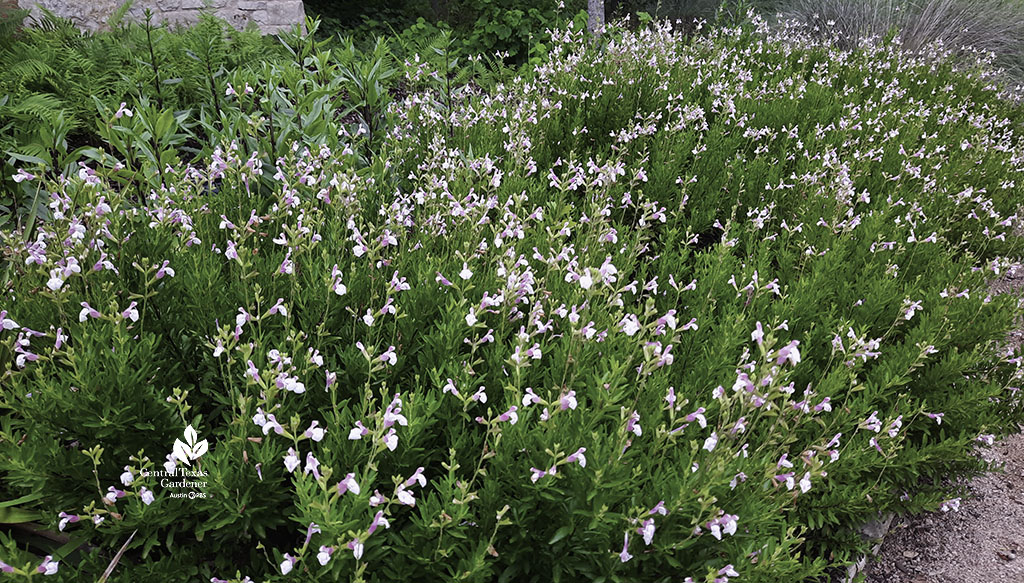
Here’s that cluster of Salvia greggii ‘Teresa’ last May.
Watch now for lots more!
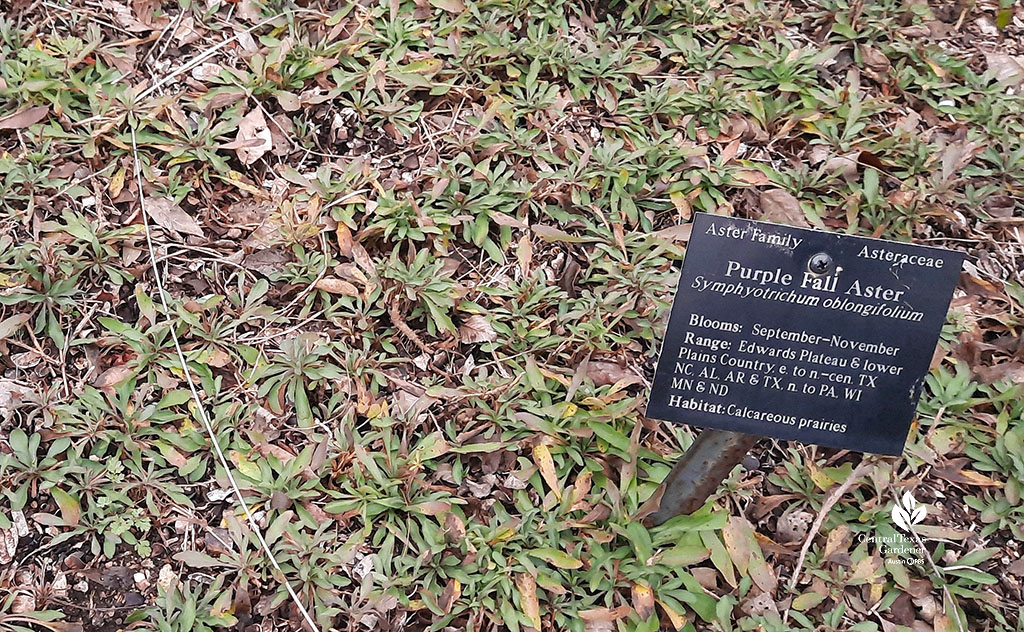
Next, we headed over to the theme gardens where she’d already cut back old growth on herbaceous perennials like asters. I finished that chore last weekend, too, since birds have grabbed all the seeds. Now’s a good time to divide them if you want to populate other areas.
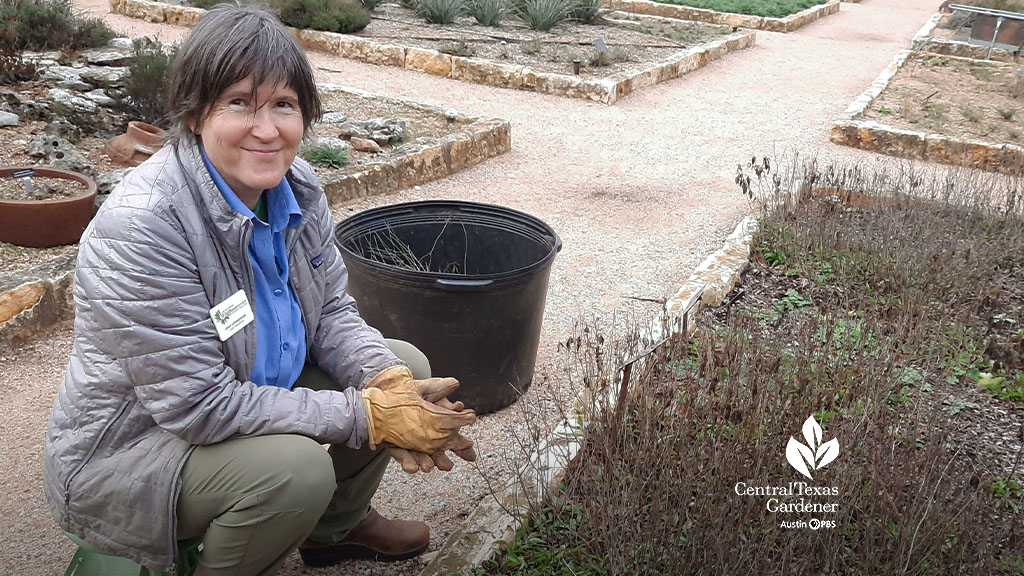
In this bed, Leslie showed us how she snipped off last year’s growth on mealy blue sage (Salvia farinacea). “The beautiful thing about a herbaceous perennial is it will very clearly tell you visually in the winter where and when to cut back,” she said.
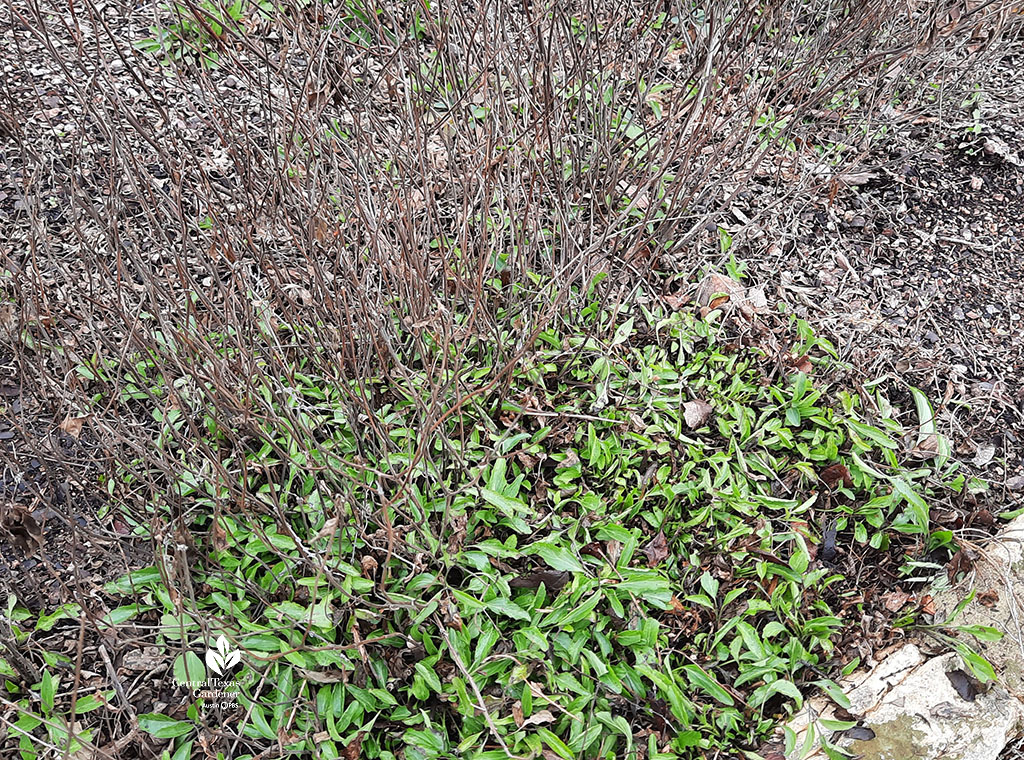
This one’s not as exacting as woody autumn sage.
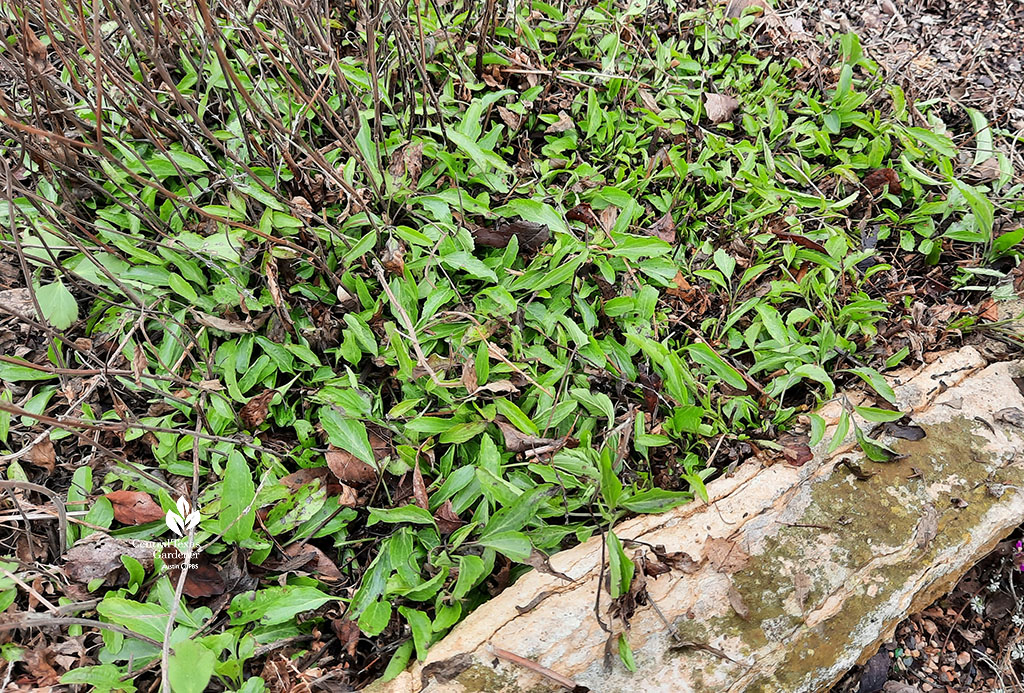
She simply pruned it back to new growth at the bottom.
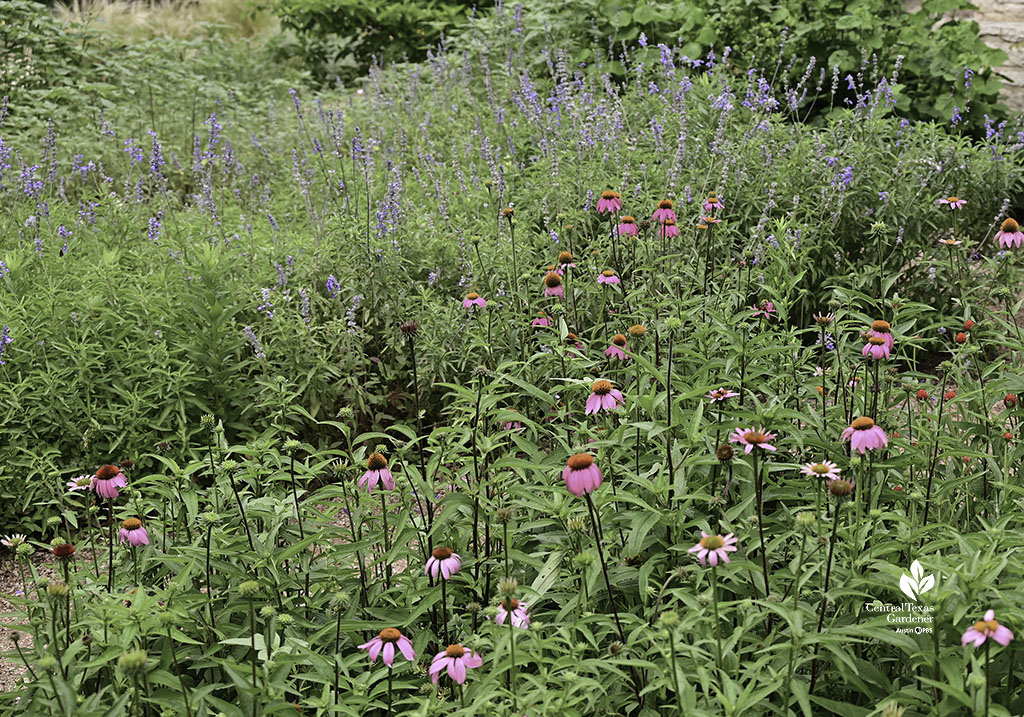
Mealy blue sage blooms spring through fall. Here, it teamed up with purple coneflower, another pollinator powerhouse.
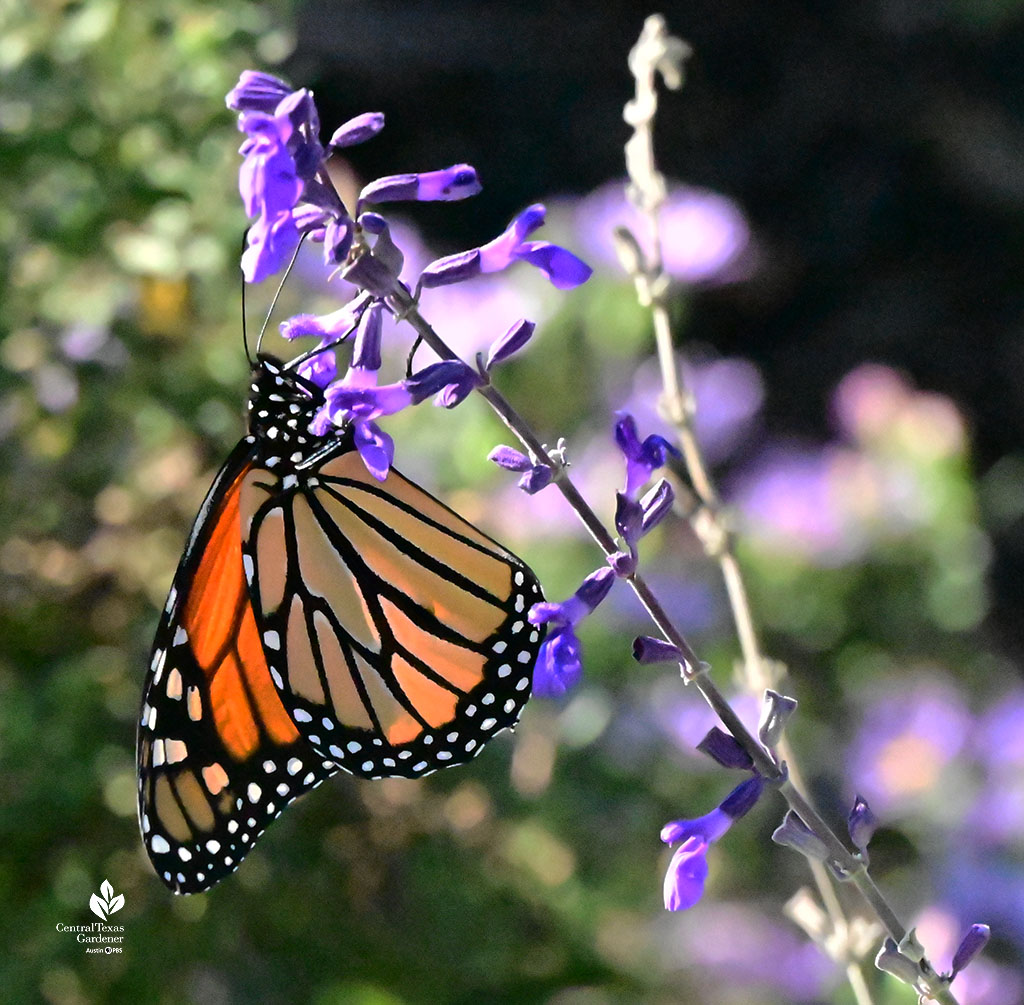
It even blooms in summer, though it can get leggy. Leslie’s trick: “I’ll cut about every other stem to the ground and I’m going to leave the blooms at the top. So, what I’m kind of doing is tricking the eye into thinking that the plant blooms and blooms and blooms and blooms and blooms continuously. I’m actually thinning by removing about every third stalk; I’ll get nice new growth that will bloom in a couple of weeks. And then I cut those old blooms back to the ground,” she said.
UPCOMING EVENTS
Wildflower Center Spring Plant Sale: March 29 – April 28.
Native Plant Society of Texas Spring Symposium at the Wildflower Center: March 2.
The John Fairey Garden Budding Out Plant Sale & Festival: March 16
Mayfield Park Annual Symposium and Plant Sale: April 6
Thanks for stopping by! Linda
tags:







